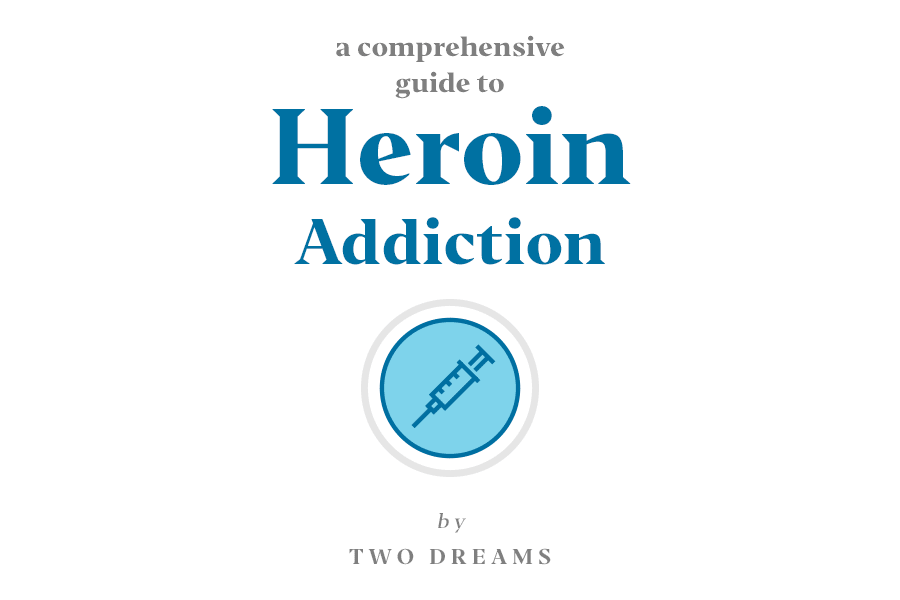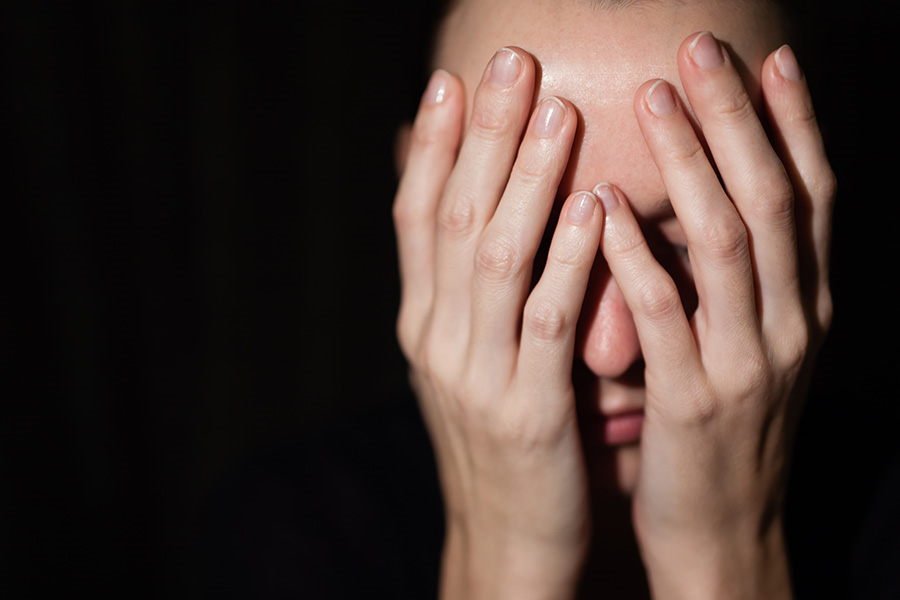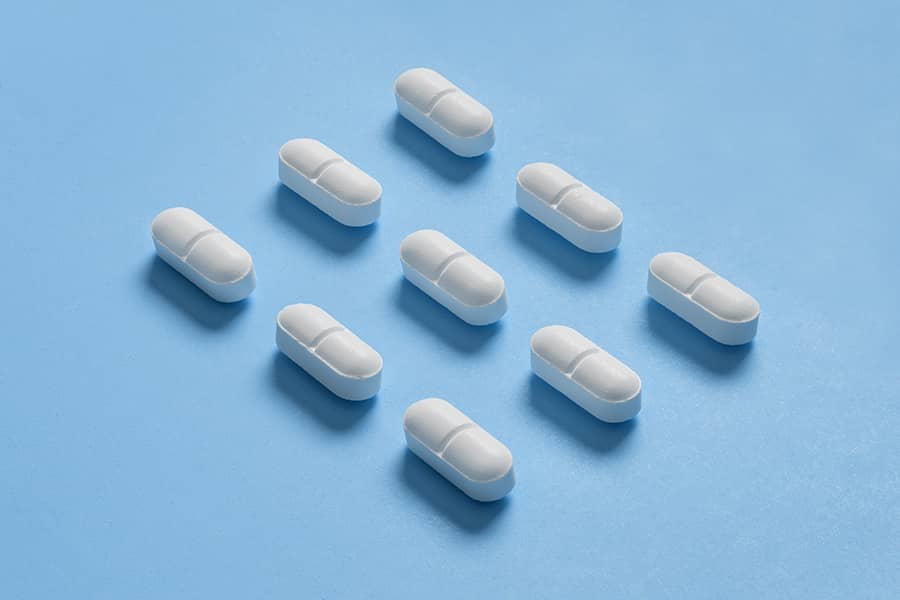
Need help with heroin addiction for yourself or a loved one?
We provide the most advanced treatment in the industry. Contact us to learn more.
Signs, Symptoms, and Effects of Heroin Addiction
What causes heroin addiction?
Addictive drugs, such as heroin, directly activate the brain’s reward pathway, a system involved in behavior reinforcement and memory production.
Activation of the reward system can be so intense that normal activities, like eating and sleeping, may be forgotten and/or neglected. Drugs of abuse characteristically enhance dopamine signaling in an area of the reward pathway called the nucleus accumbens (NA.) The NA is sometimes called the “pleasure center” of the brain. It releases dopamine when the brain senses a rewarding stimulus, such as a narcotic, and this rush of chemicals reinforces the behavior that caused the sensation, for example ingesting a pill. Thus, the cycle of pleasure seeking begins and an addiction is cultivated.

Different drugs affect dopamine by different mechanisms of action. Heroin works by binding to opioid receptors, mimicking natural feel-good chemicals and inhibiting brain cells that inhibit dopamine-secreting cells, which ultimately enhances dopamine release as well. It creates long-term changes in the NA, which affect the way the NA responds to another chemical called glutamate. This disturbance contributes to drug cravings by causing the user to remember past drug use vividly.
What are the signs and symptoms of heroin abuse and addiction?
Physical signs and symptoms of heroin abuse
- Drowsiness, nodding off
- Sleepy eyes
- Constricted pupils
- Slow breathing
- Runny nose
- Flushed skin
- Vomiting
- Scratching
- Constipation
- Nausea
- Slurred speech
- Loss of appetite
- Dry mouth
Behavioral signs and symptoms of heroin abuse
- Euphoria
- Extreme relaxation
- Sedation
- Reduced anxiety
- Mood swings
What are the effects of heroin abuse and addiction?
Long-term effects of heroin usage
- Damaged teeth and gums
- Constipation
- Itching
- Weakened immune system
- Cold sweats
- Respiratory illness
- Muscular weakness, partial paralysis
- Menstrual disturbance
- Inability to achieve orgasm
- Loss of cognitive functions
- Depression
- Introversion
- Facial pustules
- Loss of appetite
- Insomnia
- Tuberculosis
- HIV/AIDS
- Hepatitis
- Coma
- Death
Can anyone become addicted to heroin?
Yes, heroin is a highly addictive substance that has the ability to affect everyone.
Addiction is not caused by a single factor, but rather a multitude of factors. It is considered to be hereditary, in the sense that people who have a first-degree relative with an addiction are more likely to develop an addiction than those who don’t. However, many addicts have no family history of addiction, so the role of genetics alone is inconclusive. Environmental factors play a significant role, and those exposed to family and friends using heroin on a regular basis are more likely to try it than those individuals who would have to go out of their way to gain access to it. Peer pressure, low socioeconomic status, and lack of parental guidance are also contributing factors to heroin addiction.
Heroin Withdrawal
What are the causes of heroin withdrawal?
Withdrawal refers to both the physical and emotional consequences of either suddenly ceasing to take or drastically reducing intake of the drug after dependence on the substance is established. The brain and body become accustomed to functioning under certain conditions with heroin, so forcing them to quickly adapt to new ones can cause a wide array of issues, especially since opioid receptors are prevalent in high concentrations in multiple places in the body..

Signs of heroin withdrawal
Physical and mental signs of heroin withdrawal
- Cravings
- Restlessness
- Chills
- Agitation
- Insomnia
- Sweatiness
- Nausea and/or vomiting
- Muscle or bone pain
- Depression
- Diarrhea
- Mood swings
- Aches and pains
- Runny nose
- Tearing up
- Hair standing on end
- Fever
What happens during heroin withdrawal?
Heroin withdrawal usually begins 6-12 hours after the last use. It typically peaks within 1-3 days and subsides after 5-7 days. Some heavy users may experience post acute withdrawal syndrome, or weeks to months of withdrawal symptoms.
Many users report that withdrawal is incredibly intense and intolerable, so we encourage you to seek professional help and/or detoxification services before attempting to quit.
How does Two Dreams handle heroin detox?
We do not personally offer detoxification services, however our professional staff is more than happy to refer patients to nearby clinics for detox before admission into our program. In addition, we offer Suboxone and Probuphine services for appropriate patients looking to stop taking heroin with the help of medication.
Heroin Overdose
Heroin Overdose: The Risks and Effects
Ingesting a large amount or highly potent dose of heroin, either intentionally or accidentally, can lead to serious consequences, including overdose, coma, and/or death. This guide is for information purposes only and should not be used in case of an emergency.
If you suspect you or someone else has overdosed, call your local emergency hotline (ex. 911) or a poison control center (1-800-222-1222) immediately.
Signs of heroin overdose
- Constipation
- Nausea and/or vomiting
- GI tract spasms
- Low blood pressure, weak pulse
- Lack of responsiveness, even to painful stimuli
- Constricted pupils (non-reactive to light)
- Cyanosis (blue colored fingernails, lips)
- Difficult to wake up; extreme sedation
- Coma
- Seizures
- Respiratory arrest (slow, shallow breathing or no breathing at all)
What to do if someone is overdosing on heroin
If you suspect you or someone else has overdosed, call your local emergency hotline (ex. 911) or a poison control center (1-800-222-1222) immediately, as overdose can lead to widespread organ injury and/or death if not handled quickly. It is helpful to know the strength of the ingested drug, as well as the time it was taken, the amount taken, and whether or not it was prescribed. The operator will also likely ask for the person’s age, weight, and current condition.
If you are trained in the administration of fast-acting opioid antagonist drugs such as naloxone, you should take the appropriate steps as soon as symptoms appear.
Heroin Addiction: What To Do Next
What are my next steps?
Please call us here at Two Dreams if you find yourself struggling with heroin use; our lines are open 24 hours a day, seven days a week.
Two Dreams offers a safe, judgment-free place to start the healing process. There are many different ways to start managing addiction, and we understand that what works for one person may not necessarily work for another. We provide inpatient, intensive outpatient, and outpatient services based on the unique needs of each individual and the level of care needed. Our trained counselors, under the supervision of a physician, are happy to talk through these options with you and help decide which placement will best fit your needs.
We ensure that the transitions into and out of treatment are as stress-free as possible by guiding you through each process step-by-step. Additionally, we provide step-down transition programs to help you shift out of the treatment center setting.
Our expert staff has been helping people with addiction for decades, so you can be sure that you and your loved ones will be in good hands. Dr. Andrea Barthwell, founder and CEO of Two Dreams, is widely regarded as one of the “Best Doctors in America” in the field of addiction medicine. She served as president of the American Addiction Society of Medicine (ASAM), as well as Deputy Director for Demand Reduction in the White House under President George W. Bush. Her renowned status and experience in the field have allowed her to shape Two Dreams into the outstanding recovery center that it is today—one that is able to provide state-of-the-art care and services to those in need.
We are here to help you in any way that we can; we are on your side.
Education Resources/Sources Cited
- https://www.drugabuse.gov/publications/drugfacts/heroin
- http://www.drugfreeworld.org/drugfacts/heroin.html
- http://www.drugpolicy.org/drug-facts/heroin-facts
- https://www.cdc.gov/drugoverdose/opioids/heroin.html
- https://www.cdc.gov/vitalsigns/heroin/index.html
- https://medlineplus.gov/heroin.html
- https://erowid.org/chemicals/heroin/heroin.shtml
- https://teens.drugabuse.gov/drug-facts/heroin
- http://www.heroin.org/
- http://www.drugfreeworld.org/drugfacts/heroin/what-does-heroin-look-like.html
- http://www.narconon.org/drug-abuse/signs-symptoms-heroin-use.html
- http://kidshealth.org/en/teens/heroin.html
- http://druginfo.adf.org.au/drug-facts/heroin
- https://one.nhtsa.gov/people/injury/research/job185drugs/morphine.htm
- https://www.samhsa.gov/atod/opioids
How We Treat Heroin Addiction at Two Dreams
What makes our heroin addiction treatment plans effective?
For many people, heroin addiction starts out with a legitimate opioid prescription for pain, be it caused by an injury, surgery, chronic illness, or some other ailment.

Heroin is a cheap alternative to legal opioids because it works the same way in the brain and therefore causes similar effects. Many patients turn to the streets for financial reasons or because their pain relief needs are not being met by their prescribed amount.
We understand that, and are fully prepared to help our clients manage their pain along with their addiction. Through a holistic approach that incorporates physical therapy, relaxation techniques, anti-inflammatory nutritional advice, and more, we are often able to help our clients control their pain without the use of addictive substances.
That being said, we offer individualized treatment here at Two Dreams so pain management is not a part of everyone’s plan.Our unique 3-7-3 model allows for each patient to explore their own recovery while simultaneously healing alongside their peers.
Our Unique Treatment Model
Three Phases
The first “3” refers to our three phases of treatment: coming in, looking in, and looking out. In brief, the Coming In phase is about making the decision to come into the treatment center and learning to trust and tell your story. The Looking In phase is devoted to introspection, acknowledging the addiction, committing to recovery, and reducing or eliminating inducements to use. The Looking Out phase revolves around planning for life outside the treatment center, in terms of managing cravings, relationships, living arrangements, etc.
Seven Dimensions
The “7” refers to the seven dimensions of treatment we feel comprise a holistic treatment experience. In focusing on these aspects of life, we believe we can help our patients to become fully well rounded, self-sufficient individuals.
- Abstinence
- Peer Support
- Professional Guidance
- Medication Review
- Nutrition
- Exercise
- Ritual (12-Step Component)
Three Outcomes
The last “3” refers to the three outcomes we aspire to achieve in treatment: mental peace, physical well-being, and personal productivity. In achieving mental peace, patients can cast off the negative emotions fostered by addiction and replace them with feelings of self-worth, positivity, and hope for the future. In achieving physical well-being, patients embrace the mind-body connection and live the healthy lifestyle necessary for fostering a healthy mindset. In achieving personal productivity, patients play to their strengths and contribute to society in their own way while continuing their recovery journey.
Learn more about our unique program, or watch a short introduction video from our founder, Dr. Andrea Barthwell.
What will you experience during treatment for heroin addiction at Two Dreams?
All patients undergo a pain assessment upon admission to evaluate the need for pain management of any kind. This assessment is largely based on self-reported answers with physician evaluation available upon request. Our expert medical team will work with you to determine whether or not medication is necessary and, if it is, how to avoid triggering a relapse or risking addiction going forward. Patients experiencing pain will be guided through their own personalized management program, overseen by Founder and CEO Andrea Barthwell, MD, DFASAM. Feel free to explore her blog recounting her own personal journey with chronic pain here: https://drbarthwell.wordpress.com/
The rest of the treatment experience at Two Dreams involves daily process group therapy sessions, individual counseling sessions, physical activities, nutritional guidance, journaling and mindfulness exercises, recreational experiences, and more. We believe that addiction is best addressed holistically and we take pride in our ability to instill in you the tools needed to achieve mental peace, physical wellbeing, and personal productivity.

Daily Ritual at Two Dreams
Ritual is a key component of beating addiction; by ritualizing your daily schedule, you can largely remove the irrational, emotional risk-taking behaviors that oftentimes lead to relapse. We help patients to develop their own rituals by turning them on to some of our own evidence-based habits for success. For example, every morning patients wake up and take a walk on the beach, bathing their eyes in sunlight to encourage the switch from GABA to glutamate, AKA sleep to wake. They then enjoy a 4 oz. fruit and vegetable smoothie after that to start their metabolism and further encourage wakefulness.
The Two Dreams Advantage
We have a maximum of 10 patients at any given time, so we are able to continually update and evaluate each patient’s progress in an effort to maximize their outcomes. We aim for overall wellness, as opposed to just detoxification and abstinence, so when patients leave our beautiful beachside location they are ready to take on the challenges of everyday life.